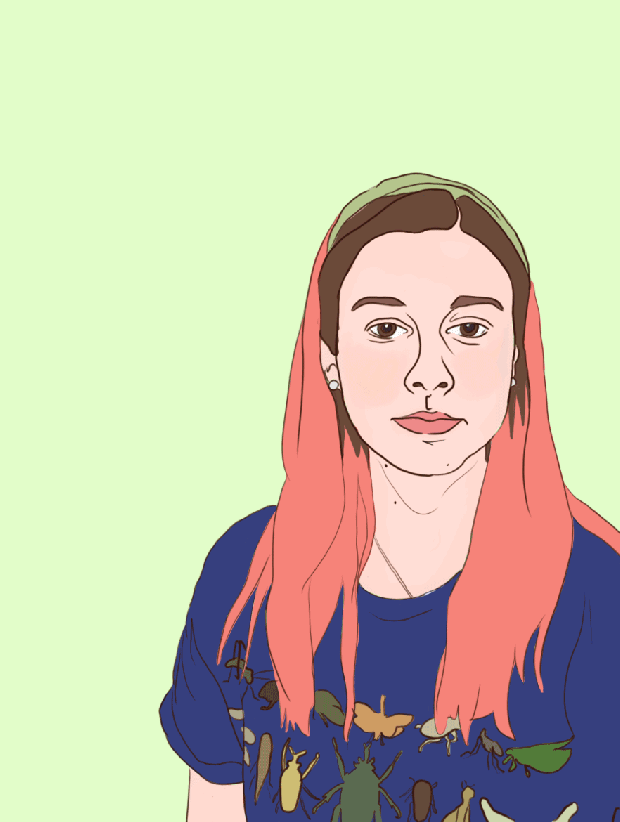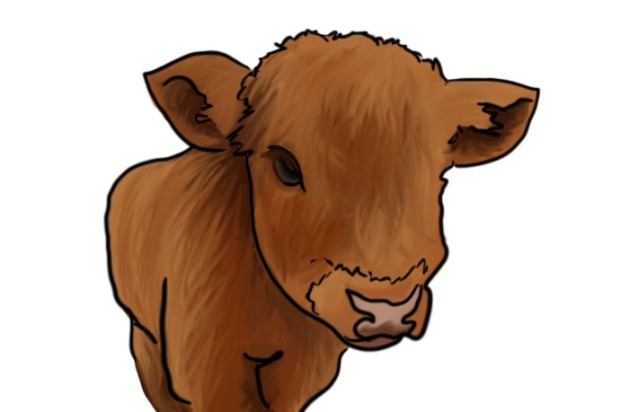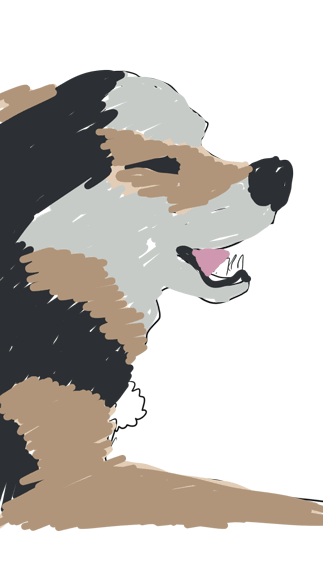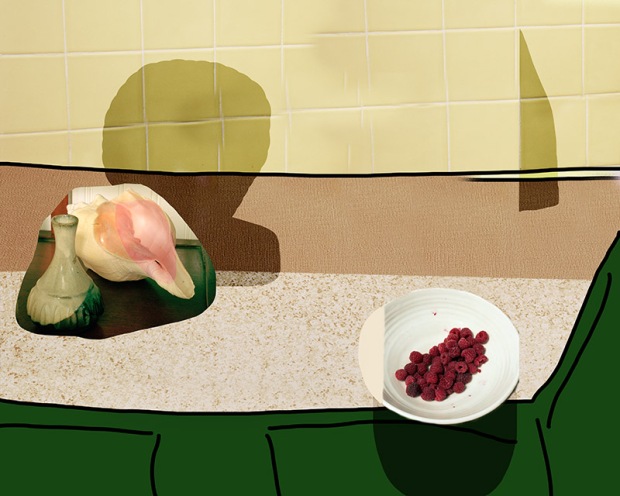Research Proposal
Beetle Infographic Research Paper
In our modern-day, American culture, insects are seen as undesirable pests with no benefits to humanity. Beetles, arachnids, centipedes, worms, and other arthropods are commonly lumped together in the ‘gross’ category of bugs and disregarded. This infographic focuses on the fascinating order Coleoptera (The University of Edinburgh), more commonly known as beetles, and serves to provide insightful facts highlighting the beauty and positive attributes of beetles in relation to the human race to present individuals with a new appreciation for what they most likely previously thought to be ‘creepy bugs’. With 350,000 species of beetles discovered in the world so far (Purdue University), their ecological benefits to the environment and therefore, humanity, and their aesthetic beauty, it is important to make this information available to individuals in a way that is friendly and accessible which makes a colorful and aesthetically pleasing infographic an ideal medium for this topic.
As individuals who have always admired beetles for their cute appearance and visually stunning patterns and colors, and the fact that wearing shirts covered with beetles is ‘fun’ and ‘quirky,’ this project has been very beneficial as it has given each group member a deeper understanding of a beetles’ role in the ecosystem as well as a newfound appreciation for the insects as a whole due to the fun and interesting new pieces of information that were learned. At first glance this topic may to be trivial, however we see it as a way to illustrate the positive qualities of this order of insects as well as a way to take part in shifting the negative stereotype that is commonly given to these ‘bugs.’ Although individuals having a higher awareness for the intriguing impact beetles have on the environment or acquiring a knowledge of the delightful facts included in this infographic may not have any direct benefit to beetles themselves, when considering their endurance and ability to adapt, they are in no danger of becoming threatened or extinct anytime soon, it is still important to create a dialogue about these fascinating creatures and change the connotation of the term beetles. The information present in this infographic makes it easier to differentiate between all the animals lumped together as bugs, illustrating them in a more approachable and beneficial way, and shedding positive light on these little creatures.
Beetles have been roaming the planet for roughly 270 million years according to fossil records, make up 25% of all animals that inhabit the earth, and though it is not widely known, they have partaken in many environmental functions to support their ecosystems ever since (Where do Beetles Live,Harwood). Some burrow beneath the Earth and dig tunnels to create passageways for water to reach plants, whereas others assist in the pollination of flowers (Harwood). Other Coleoptera clear waste by feeding off of garbage and dead trees (The Summer). Beetles inhabit every continent, in habitats from pole to pole, they live in both terrestrial and freshwater aquatic habitats, from forests to grasslands, deserts to tundras, and from beaches to mountaintops (Where Beetles Live). Due to their widespread habitation, beetles also are one of the more significant research markers of global warming. The species of beetle known as the Harlequin Ladybird offers a large basis of evidence for global warming due to the fact that it has been invading warmer areas and pushing native species further north (Jones). This infographic displays information about beetles and their environmental impact, but also focuses on five species of beetles, the ladybird beetle, rhinoceros beetle, jewel beetle, goliath beetle, and firefly and gives pertinent information on each. For example, the pie chart depicting the percentages of ladybugs found on crops in the six states they are most prominently found within the US, and the scatterplot depicting the decreasing mean population of corn rootworm beetles over the past 7 years (Ladybugs, Estes). This infographic also includes a graph comparing the lifespan of these five beetles, these life spans ranging from 2 weeks to 2.5 years (Feldman). Each team member worked equally in the initial stages of deciding upon and researching a topic as well as throughout the whole process of researching, designing, and illustrating our infographic. Lauren completed the initial research and assisted Abby in writing the research proposal while Abby and Kenan began to design the format and icons for the work. All teammates also collaborated on the illustration and design of the final infographic. This infographic includes multiple charts and various illustrations of beetles to make the infographic very reader-friendly and approachable while also including sophisticated design elements that make it a complete and cohesive work of digital art and design.
Works Cited
Estes, Kelly. “And the Survey Says…” The Bulletin: Pest Management and Crop Development Information for Illinois, The University of Illinois Extension, 17 Sept. 2018, bulletin.ipm.illinois.edu/?p=4344.
Feltman, Rachel. “Why Are There so Many Freaking Beetles? Science May Finally Have the Answer.” The Washington Post, WP Company, 18 Mar. 2015, http://www.washingtonpost.com/news/speaking-of-science/wp/2015/03/18/why-are-there-so-many-freaking-beetles-science-may-finally-have-the-answer/?noredirect=on&utm_term=.16e242dcdee2.
Goliath Beetles, 2010, Australian Museum, http://australianmuseum.net.au/image/goliath-beetles
Harwood, Jessica. “Importance of Insects.” CK-12 Foundation, CK-12 Foundation, 30 Aug.
2016,www.ck12.org/c/life-science/importance-of-insects/lesson/Importance-of-Insects-MS-LS/.
Hevel, Gary. “How Do Insects Help the Environment?” NSTA: Students with Disabilities,
National Science Teachers Association,www.nsta.org/publications/news/story.aspx?id=50211.
Jones, Richard. “Why Beetles Are the Most Important Organisms on the Planet | Richard Jones.”
The Guardian, Guardian News and Media, 25 Jan. 2018,
www.theguardian.com/environment/blog/2018/jan/25/why-beetles-are-the-most-importan
T-organisms-on-the-planet.
“Ladybugs.” National Geographic, National Geographic, 24 Sept. 2018, www.nationalgeographic.com/animals/invertebrates/group/ladybugs/.
Purdue University. “Importance of Insects.” Youth and Entomology, Purdue University College
of Agriculture,
extension.entm.purdue.edu/radicalbugs/index.php?page=importance_of_insects.
“THE SUMMER INSECT INVASION; What the Bugs Do and How to Stop Them.” The New York Times, The New York Times, 29 May 1986, http://www.nytimes.com/1986/05/29/garden/the-summer-insect-invasion-what-the-bugs-do-and-how-to-stop-them.html.
The University of Edinburgh. “The Importance of Beetles.” Natural History Collections:
Canidae, The University of Edinburgh Natural History Collections, www.nhc.ed.ac.uk/index.php?page=25.123.
“Where Beetles Live in Your Home | Terminix.” Terminix® – Powerful Pest & Termite Solutions, ServiceMaster, http://www.terminix.com/pest-control/beetles/behavior/where-do-beetles-live/.
T-Shirt Design
Classwork 11/26
Infographic Inspiration
Gif

Artist Presentation
Lucas Blalock is a New York based artist who was born in Asheville, North Carolina in 1978, went to college at Bard College and UCLA, and began his career doing solo and group exhibitions in New York (Art21). As an artist, Blalock is interested in revealing the process behind photographic images by using photoshop to emphasize his edits and reveal the relationship he has created between himself and his subject. He is interested in both the history and possibility of photography, combining the two through his use of shooting with a large-format camera on film and then scanning his images to digitally alter them, finding the computer to be an alternative darkroom (De Agostinis). He is primarily attracted to objects that have “something pathetic about them,” typically purchasing them from the dollar store or picking up objects he finds on the streets (De Agostinis). He sees this view of the pathetic objects he finds as a sort of burlesque on the corporate world; and sees photography as an act of drawing, as he can create his image both by constructing the subjects into a still life and then being able to create his own image of the world through his digital edits (De Agostinis). He finds this act of photographic drawing to be a way for him to understand the world by making a photograph of it (Art21).
Blalock’s work is largely inspired by Bertold Brecht’s ideas on the theater and his theatrical techniques of alienation which provide the audience a space for intellectual analysis of the events onstage by revealing the inner workings of the theatrical apparatus to the audience, in effect revealing the labor behind it (De Agostinis). Blalock includes this idea in his own work by emphasizing blunt and very obvious editing techniques within his photographs. He says that it felt like special effects at first as he was digitally altering these images that he so thoughtfully created, but he was eventually able to solidify a style and method of working that revealed his labor and involvement in the creating of these images (De Agostinis). His editing techniques are typically more graphic but sometimes he chooses to use them in a more painterly manner as well (Charlie Schultz). Photoshop as an entity hides layers; it makes photographs homogenous and cohesive edited works that approach a subject from one view; Blalock strives to undermine that norm by bluntly using the ‘dumbest’ tools that many deem to be the easiest beginner ways of manipulating a photo to add dimension and visual interest to the image by creating multiple views of the same subject all edited together (De Agostinis). In this way he is making a digital image sculptural, in that it appears to be three-dimensional and able to be seen from multiple perspectives. He uses these editing techniques to add levels of labor while still leaving the final product as a photograph, just as he initially started with.
All of Blalock’s pieces speak to his views on relationships. He finds himself being able to have a relationship with his subjects through the view of the camera lens without any outside interferences. He sees humor in these relationships and strives to portray that humor through the humor of his editing techniques. In his work he intentionally creates a sense of the subjects being off-balance, creating a sense of tension, and ensuring that the energy that is created remains alive and circulations throughout the piece (Charlie Schultz). Blalock states that for him, “making photographs is about trying to have this relationship and then heighten that relationship to the point it’s clear enough or specific enough to share it” (De Agostinis). He sees photoshop as being part of that relationship as well, as it is part of the modern, culture, current photographic apparatus, and in effect, part of what photography has become (De Agostinis). This sense of relationships is seen particularly through his most recent exhibition, Ketchup as a Vegetable, where he comments on the Reagan-era legislation that cut spending on school lunches by considering ketchup and other condiments to be vegetables (“Lucas Blalock: Ketchup”). Through his piece Ham and Olives, he comments on this absurd relationship between the government and the public and the public and our perception of food as he distances the audience from the actual subject by replacing the ham and olives with paper and beads, once again nodding to the theatrical influence in his work and emphasizing the pathetic nature of the objects. The “cheap, grubby objects in his image and the hopeless discombobulation he created through his editing seems to be a logical extension” of a world in which sugary tomato paste and pizza are equivalent to a real tomato (“Lucas Blalock: Ketchup”).
Works Cited:
De Agostinis, Giada. “Studio Visit – Lucas Blalock « Paper Journal.” Paper Journal Studio Visit Lucas Blalock Comments, 6 June 2017, paper-journal.com/studio-visit-lucas-blalock/#.W9d81_ZFw2w.
“Lucas Blalock.” Art21, art21.org/artist/lucas-blalock/.
“Lucas Blalock: Ketchup as a Vegetable.” Artnet, Artnet Worldwide Coorporation, http://www.artnet.com/galleries/galerie-eva-presenhuber/lucas-blalock-ketchup-is-a-vegetable/.
Schultz, Charlie. “LUCAS BLALOCK with Charlie Schultz.” The Brooklyn Rail, 5 Mar. 2018, brooklynrail.org/2018/03/art/LUCAS-BLALOCK-with-Charlie-Schultz.
Cow

Gif Exercise

Artist Presentation Initial Research

- Lucas Blalock, Conch and berries and, 2015-2017, Archival inkjet print, 32.5 × 40.5 in frame
- This image includes multiple images that appear to be collaged together in a way that emphasizes the distinction between the images of different sources. The image looks as though it could have been made out of traditional 2D mediums such as paper and magazine clippings, however the black lines that the artist used to outline the forms of the counter give the notion that these images were collaged digitally. The image includes a vase, a conch shell, and a bowl of berries on a textured countertop in front of a tiled wall. It appears as though the artist used photoshop to create this artwork, incorporating both found images and his own line art to create depth and form in the work despite the very flat images of the objects on the counter he used. The overall image has a disjointed and disconnected feeling as the images do not seamlessly fit into the environment, the shadows do not quite represent the objects they are coming from, and the bowl of berries is perched precariously on the edge of the countertop.
- The artist employed line with the black lines he added around the countertop to define the shape and the space, giving the image three dimensionality that contrasts with the flat images that are collaged together on top of his digital drawing. He utilizes shape through the use of the round shapes of the objects that contrast the triangular shape of one of the shadows and the uniform square tiles. He edited them to be very disjointed and uneven in some places that mimics the quality of the black lines he drew. The color is rather cohesive, with the yellows and greens of the background contrasting with the complimentary colors of the pinks and reds in the conch shell and the raspberries that emphasize the subjects. This image is balanced as the conch shell, berries, and triangular shadow are all evenly spaced out throughout the image and contrasting the sense of disjointedness that the rough editing of the pictures creates.
- The presentation supports the conceptual component of the work as Blalock likes to create tension and energy within his works, but also allow for the viewers to make their own connections. He does this by keeping his image from being boringly digestible and didactic through the off-balanced and tense nature of his images through the visible disconnect of the editing in the collage and the dynamic energy that he intends to circulate through the image and keep the work alive.
- My interpretation of this work is that the artist is speaking to the male and female genders by representing their genitals through the objects of a conch shell, vase, and bowl of raspberries, that at first appear as a modern day still life. The title of conch and berries alludes to this interpretation. This appears to be one of his more straightforward works as the title directly and understandably alludes to the image whereas many of his others take more time to interpret.
- This work makes me think about the genders and their relationship to home life as the setting appears to be a kitchen countertop as well as thinking of the genders in relation to objectification as the artist has literally represented the human genitalia in commonplace household objects.



















